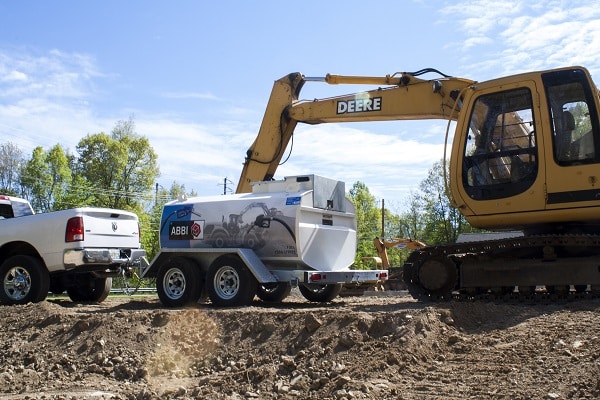Get the Greatest Equipment Runtime with Smart Auxiliary Fuel Choices

External fuel tanks offer a simple, time-saving solution to ensure generators maintain an adequate fuel supply.
When generators run around the clock and under varying loads, staying on top of fuel levels can be a challenge. Improper fuel monitoring can result in unscheduled downtime for refueling, or worse, the unit running dry. Not only do these scenarios tend to happen at the worst possible times, but delays are compounded when a trained technician is required to prime the system to get it up and running.
While some newer generators feature large fuel tanks and runtimes exceeding 24 hours, employees must still be mindful of fuel levels and take time to check and refill the tanks almost daily. It may not seem like much, but over the course of a large job, checking and refilling tanks can add up to hours of wasted time and lost revenue.
External fuel tanks offer a simple, time-saving solution to ensure generators continue to run. To get the most out of an auxiliary fuel supply, however, there are a few important things to consider.
How Large Should the Tank Be?
Auxiliary fuel tanks range in capacity from less than 150 gallons to ISO-container-sized tanks that hold upward of 25,000 gallons. To determine the capacity best suited to a jobsite, account for the equipment the tank will fuel and determine how often a fuel jobber will stop by. For example, a 100-kilowatt generator burns about 6 gph at three-quarter load, or 144 gallons per day. If a tank will fuel a couple of these generators around the clock, a 2,100-gallon tank allows for about 7 days between deliveries.
Even in situations where the auxiliary tank is not much larger than the generator’s onboard tank, connecting the generator to the auxiliary supply means there is always an emergency reserve of fuel in the onboard tank. If something were to interrupt the fuel supply — a late delivery or the equipment getting overlooked during a fuel drop — the contractor can simply flip the three-way fuel valve on the generator and switch over to the onboard fuel tank, providing 12 to 24 hours of additional runtime. Without this redundancy, a generator is always in a situation where it is merely hours from running out of fuel.
Choosing a tank that’s designed to not only direct feed multiple pieces of utility equipment, but also refuel trucks and other mobile equipment, can greatly increase jobsite efficiency; just be sure to include those added fuel needs when calculating the capacity.
For large projects, fuel tanks can be equipped with advanced fuel monitoring systems that allow contractors to monitor consumption via the cloud. This helps managers track levels and schedule deliveries remotely for multiple sites.

To simplify Tier 4 compliance, Western Global’s ABBI Blue is available with built-in DEF storage.
How Much Mobility is Needed?
In most cases, it’s best to select a tank that’s easy to move around the jobsite as power needs change. When it comes time to move the tank, more options for maneuverability will ensure the tank can quickly and easily be relocated. Tanks that include forklift pockets, for example, take less time and hassle to move than tanks that require a crane.
To improve jobsite flexibility and further extend runtimes, some tanks can be linked to form a single, large fuel supply. Then, when fuel demand decreases or one or more of the tanks are needed elsewhere, they can be separated and moved.
Can it Help with Environmental Regulations?
It’s a given that fuel tanks need to meet environmental standards, but some do so in ways that expend less time and money. Choosing a tank with built-in secondary containment eliminates the need for secondary environmental basins, which are a nuisance to clean and make tank relocation a time-consuming process. Double-wall units with removable inner tanks further reduce cleaning time by making it easy for workers to thoroughly clean a tank following a contained spill.
To simplify Tier 4 compliance, consider choosing a tank with built-in storage for diesel exhaust fluid. Having DEF and diesel in the same tank can reduce hassle for workers.
What’s the Theft Risk?
Fuel’s not cheap, and deterring theft can go a long way toward saving money. Some tanks feature letterbox-style ports that allow enough space to run hoses out for continuous fueling while the tank’s cabinet keeps the pump and controls securely locked. This allows the operation to continue through the night without risking fuel theft.
Whether auxiliary tanks are used to fuel generators and light towers at a construction site or to help power a large event, the benefits of maintaining an adequate fuel supply that’s secure and easy to transport can go a long way toward increasing uptime and the efficiency.
John Cleary works as a business development manager for Western Global, an international designer and manufacturer of industry-leading tanks and equipment for fuel and fluid handling.
